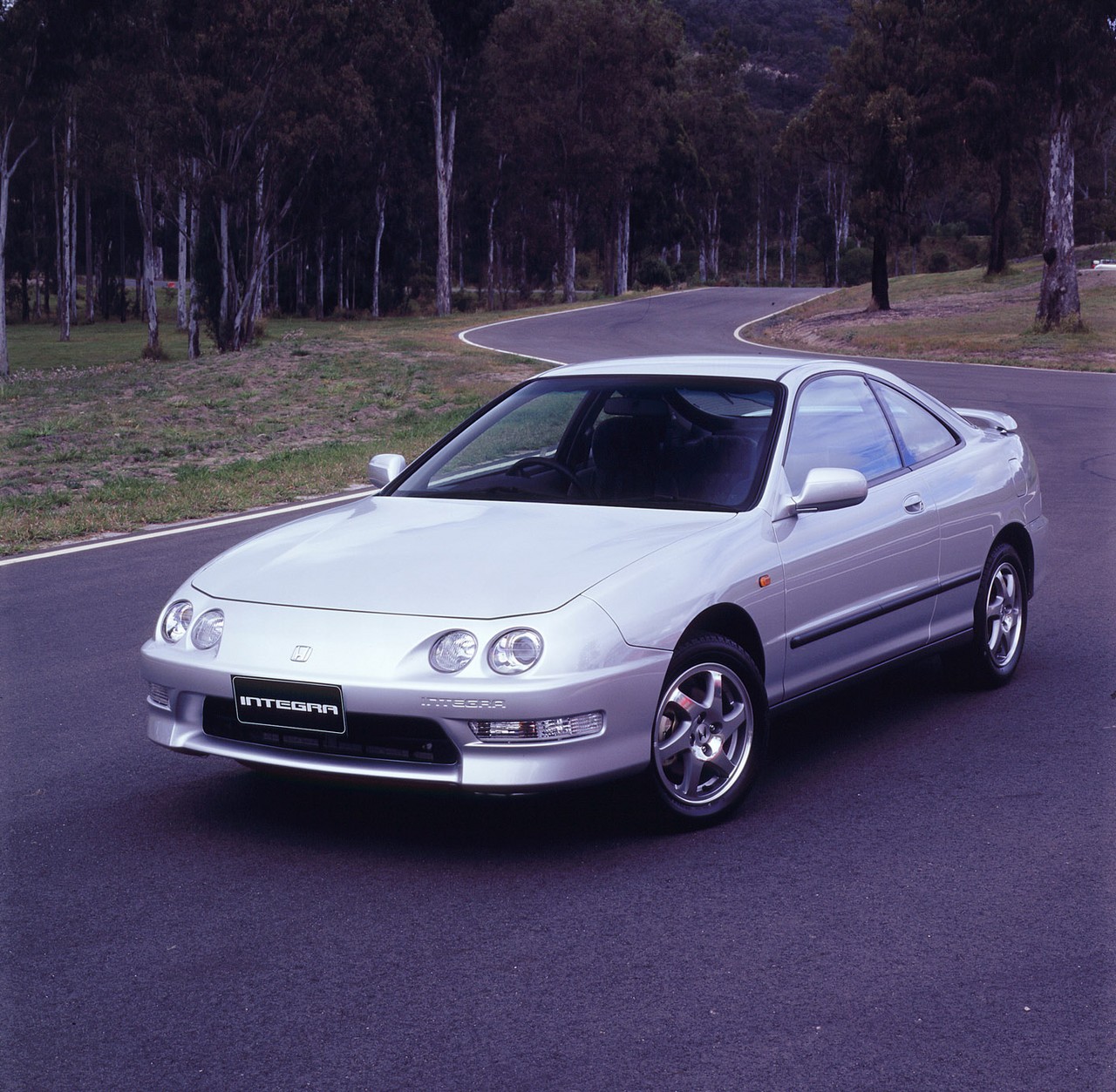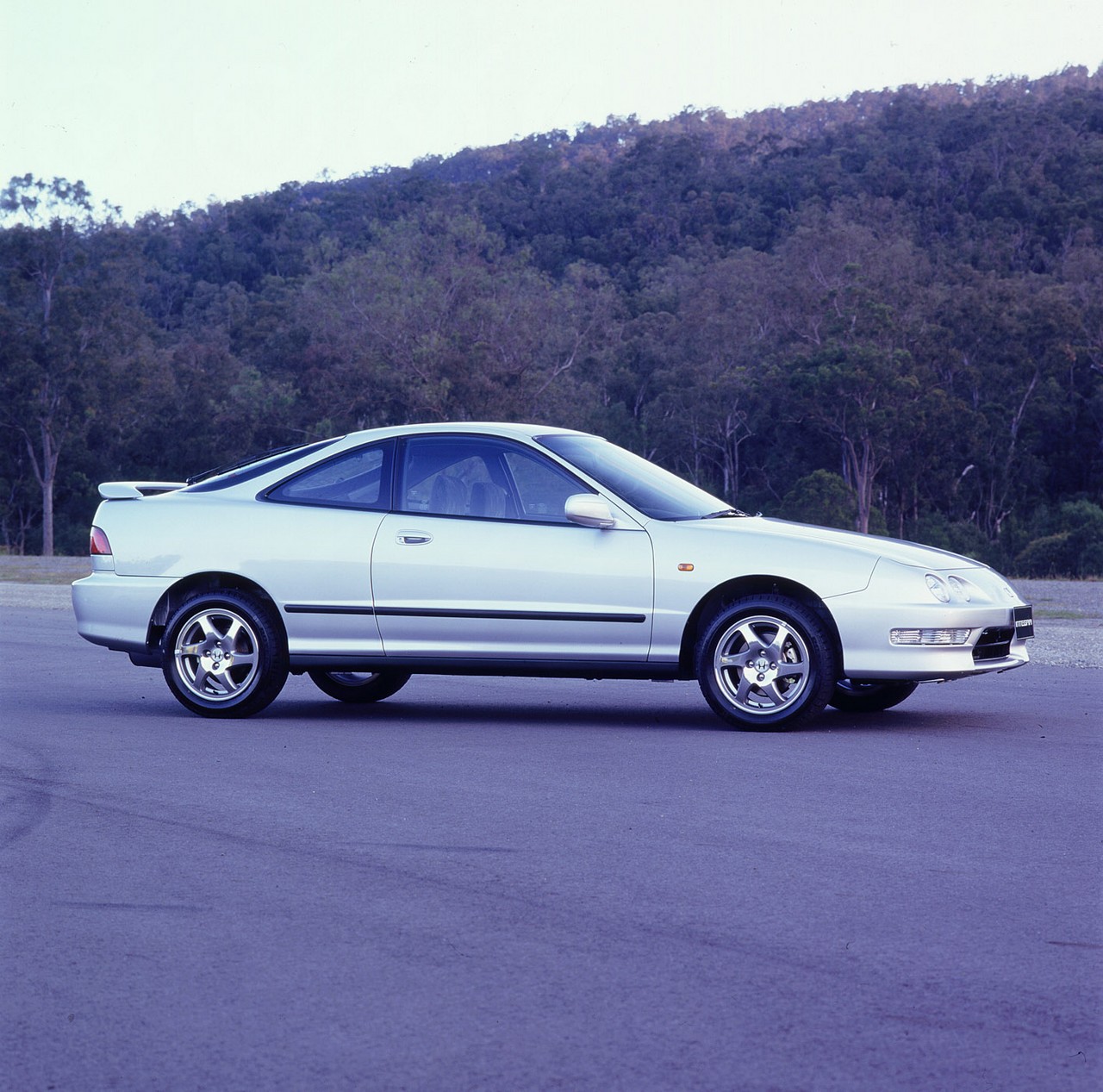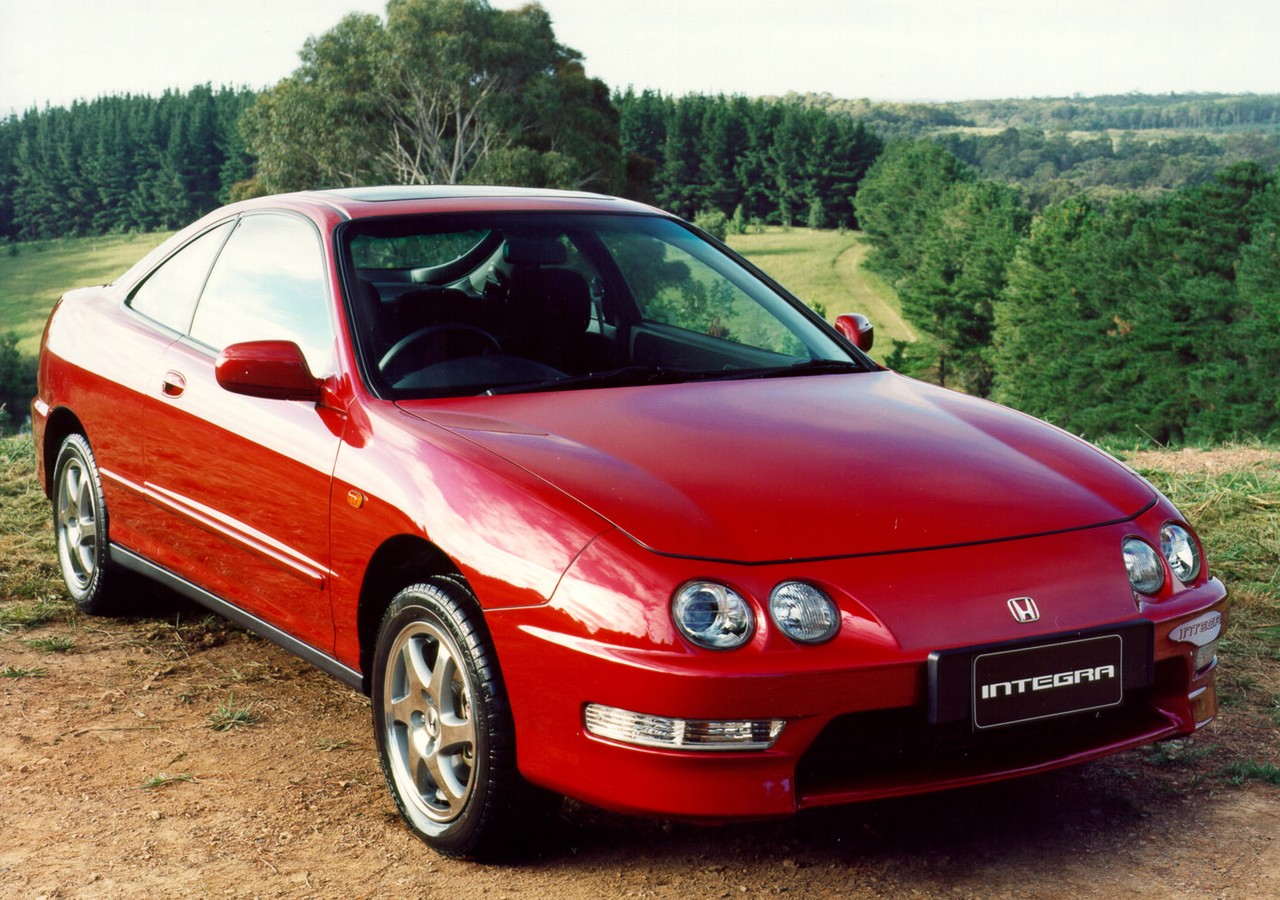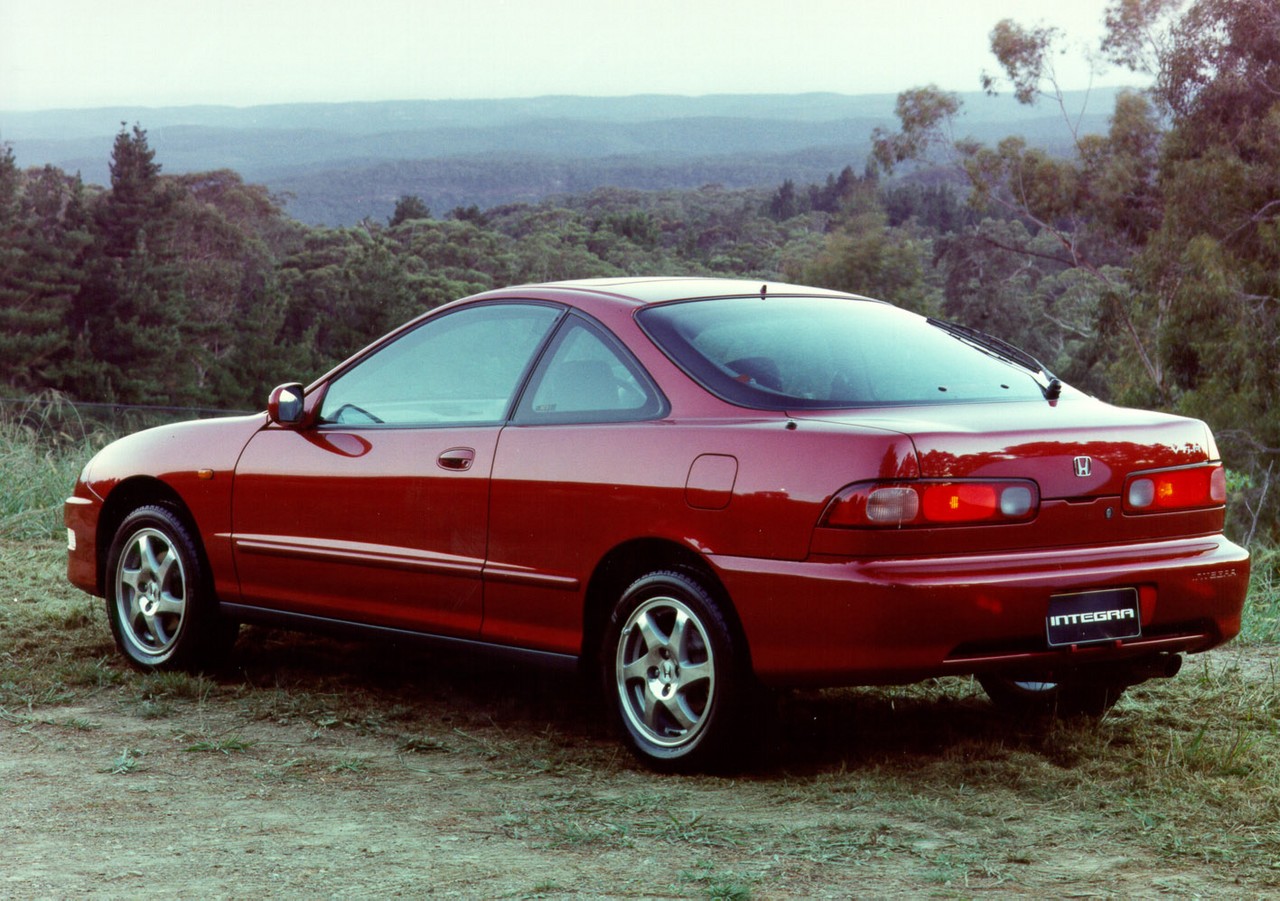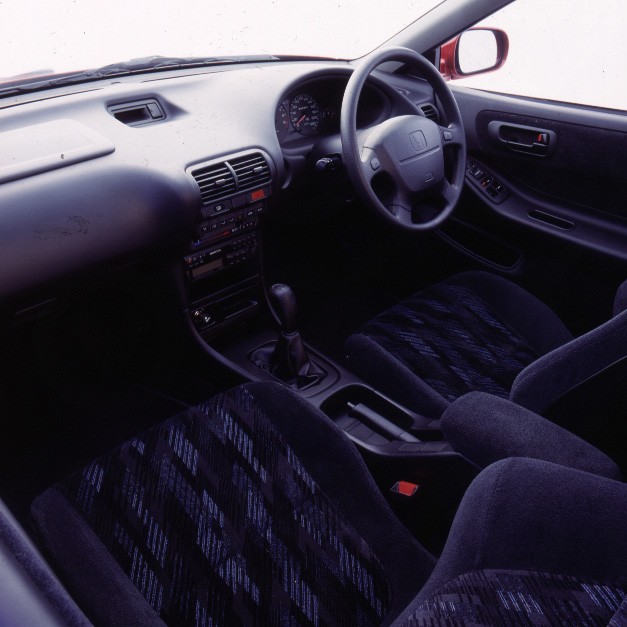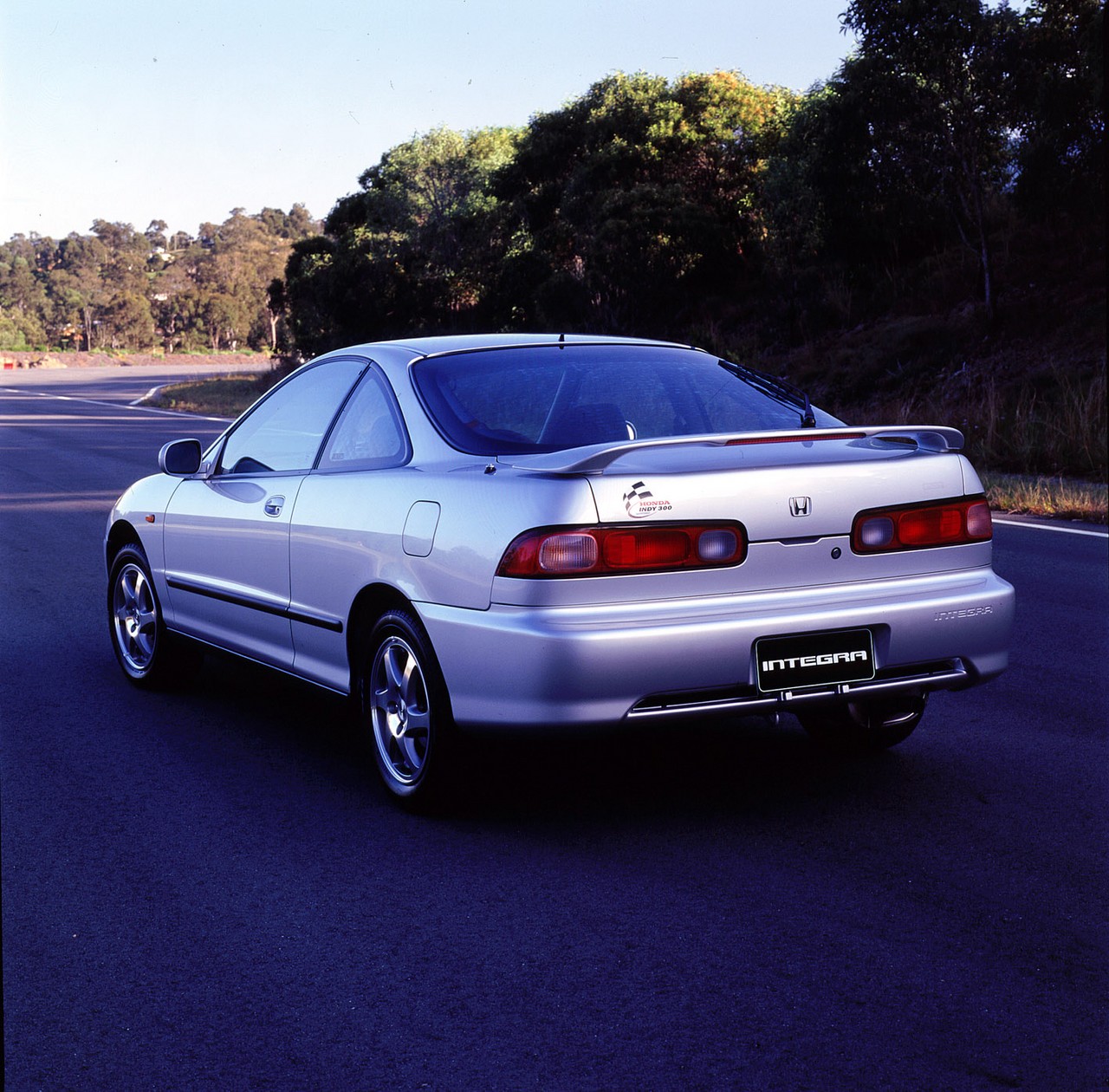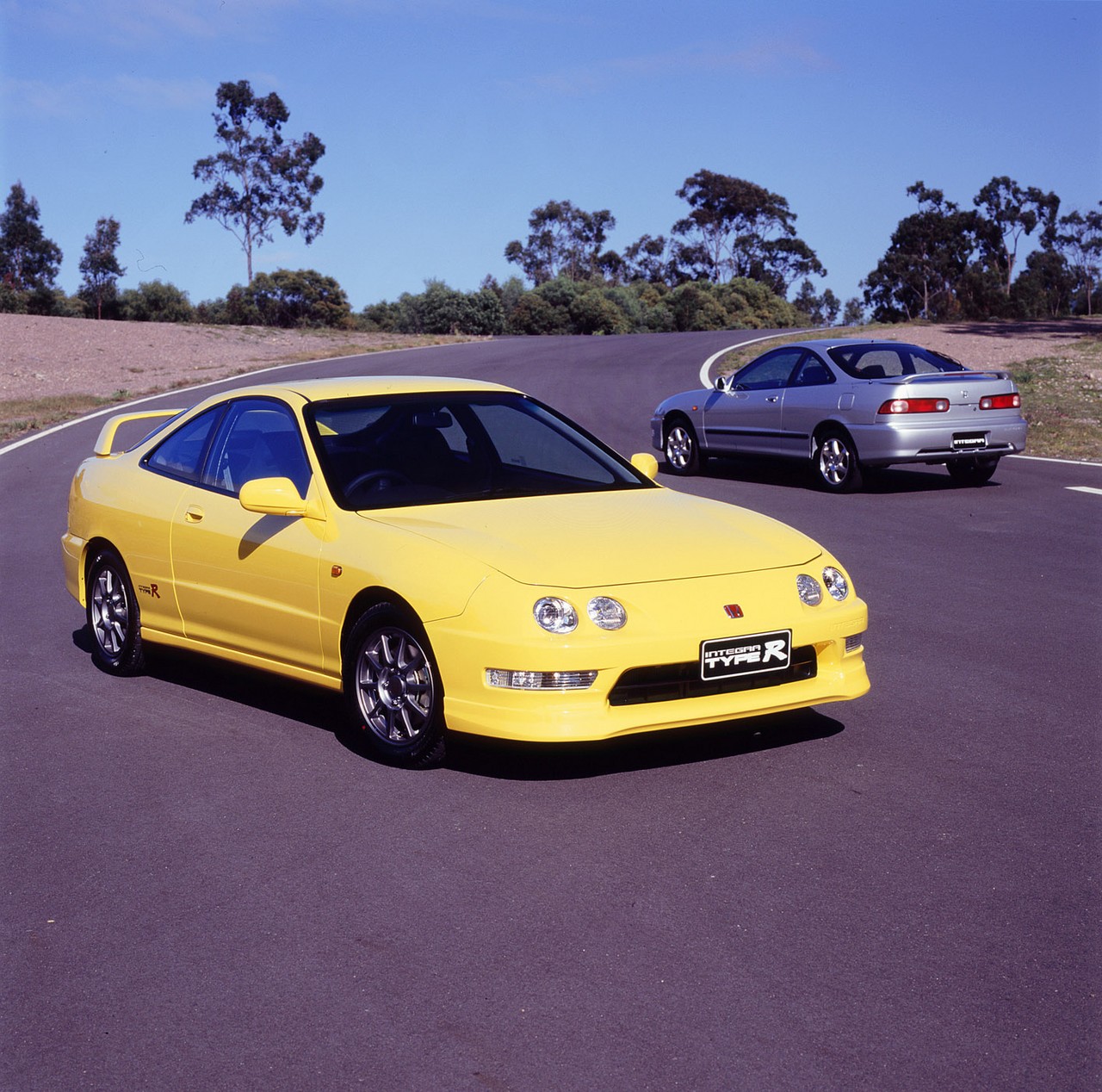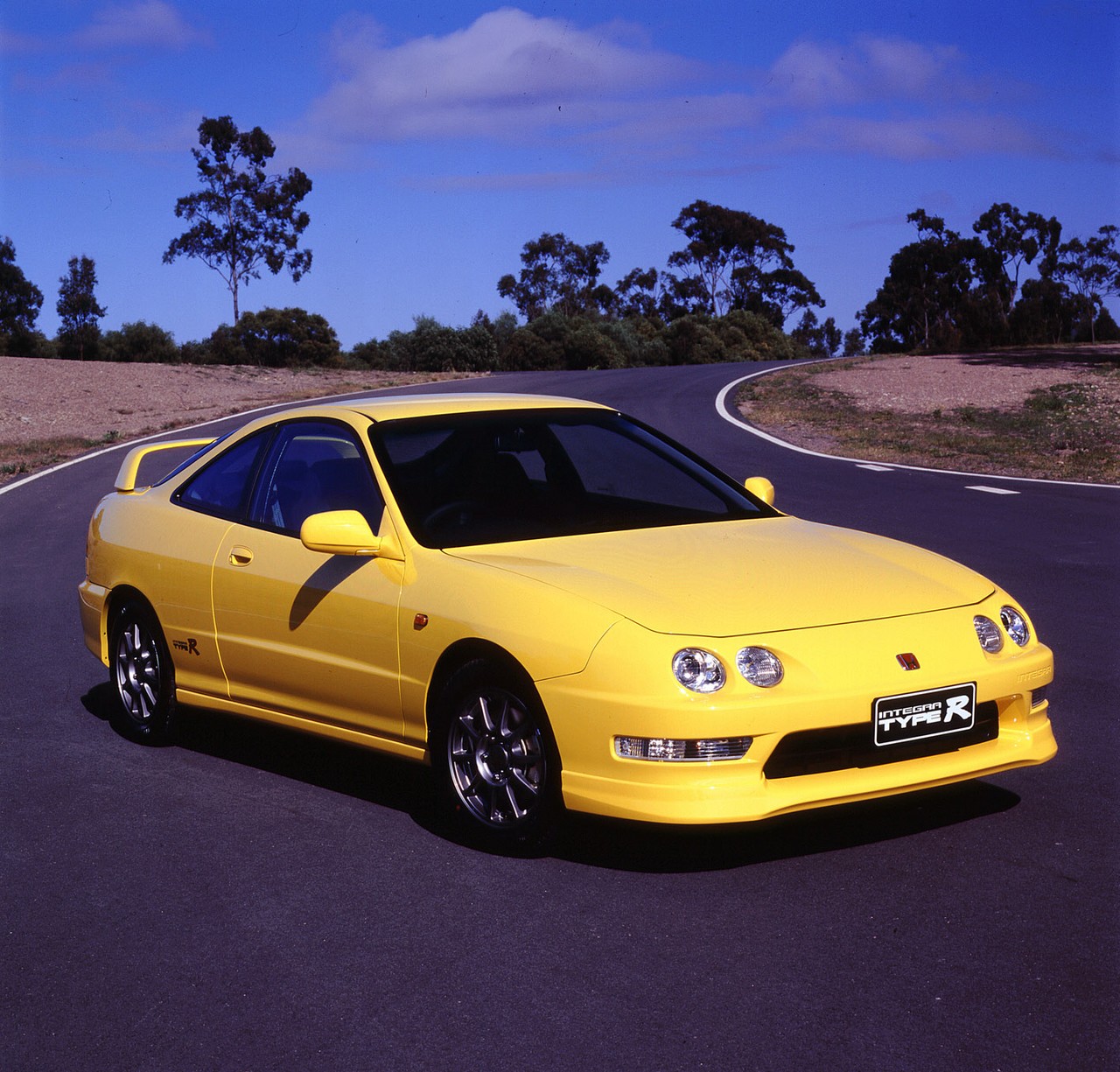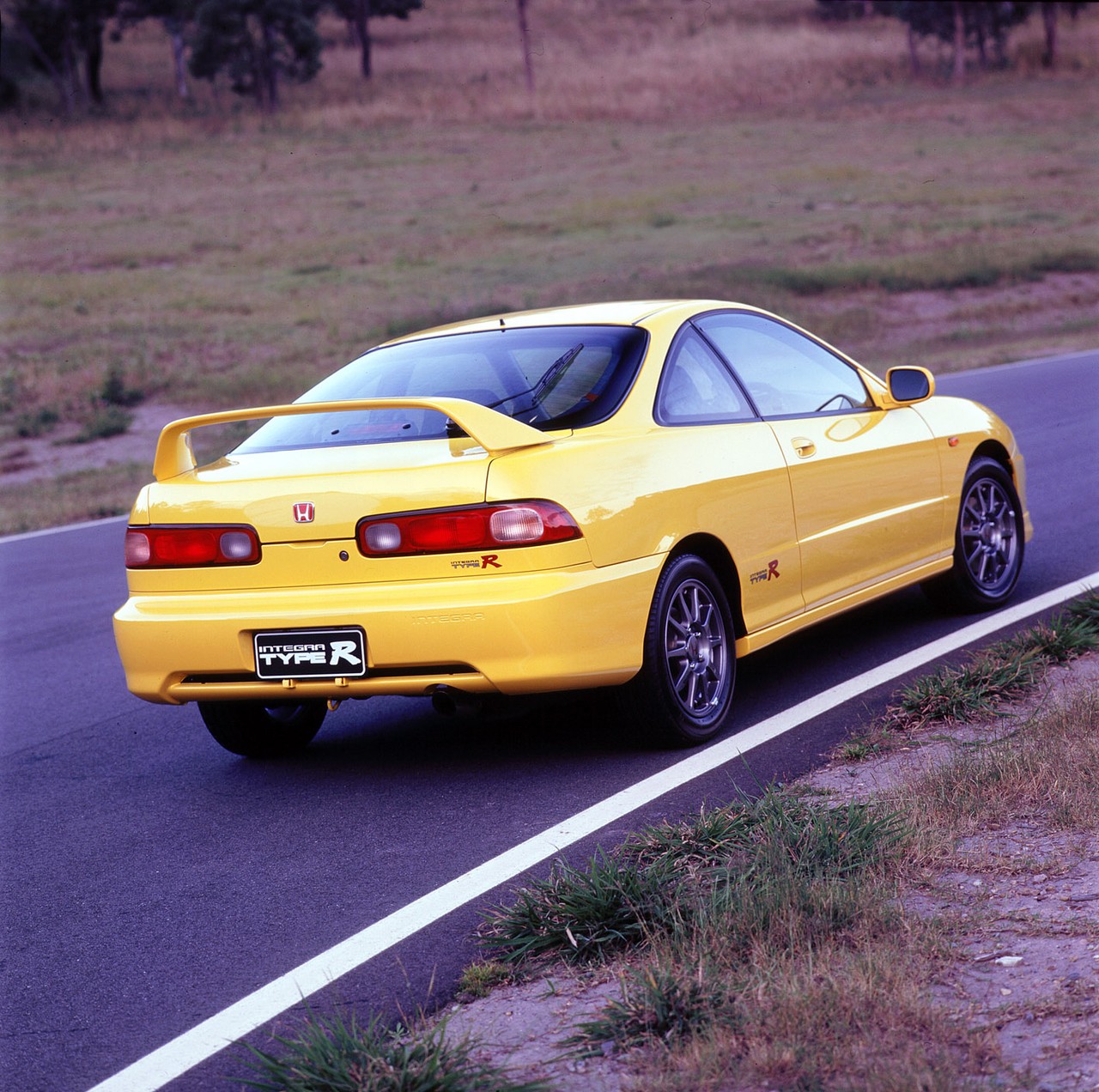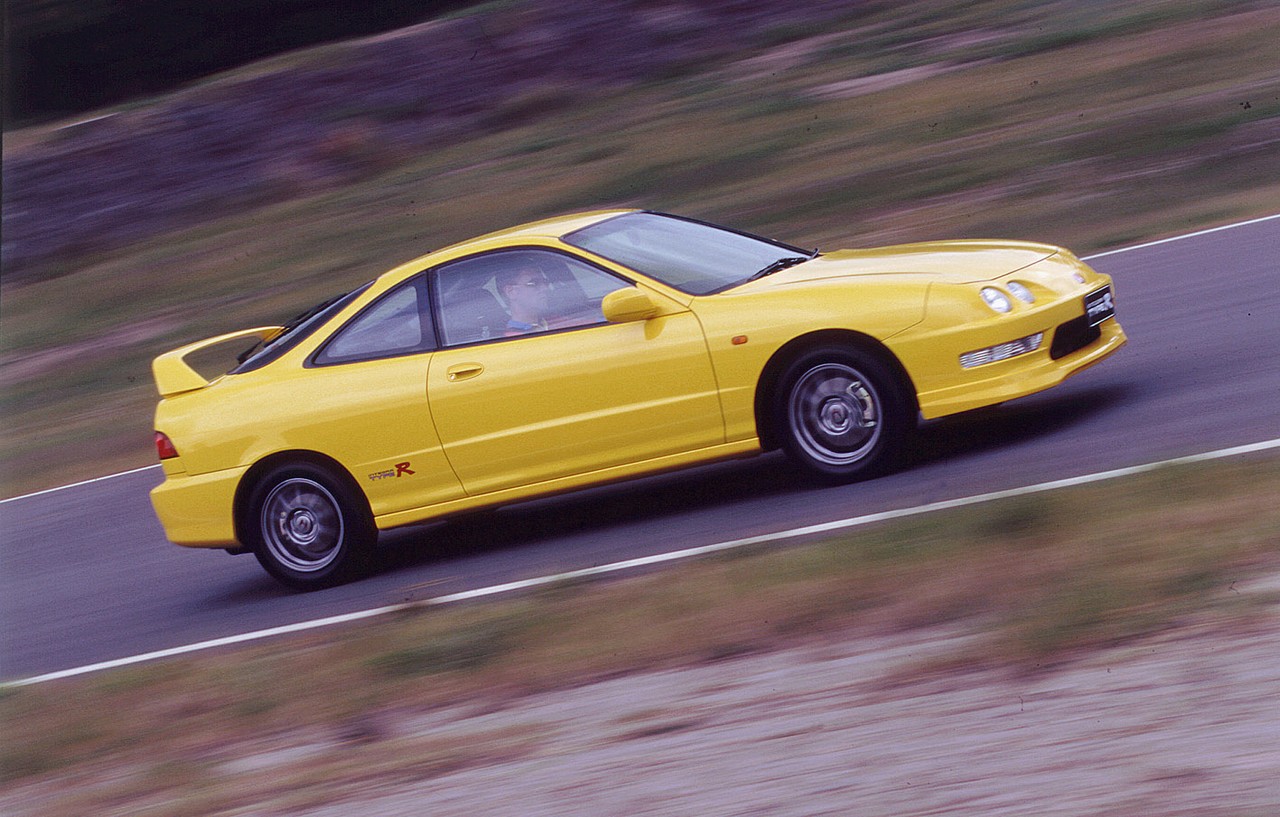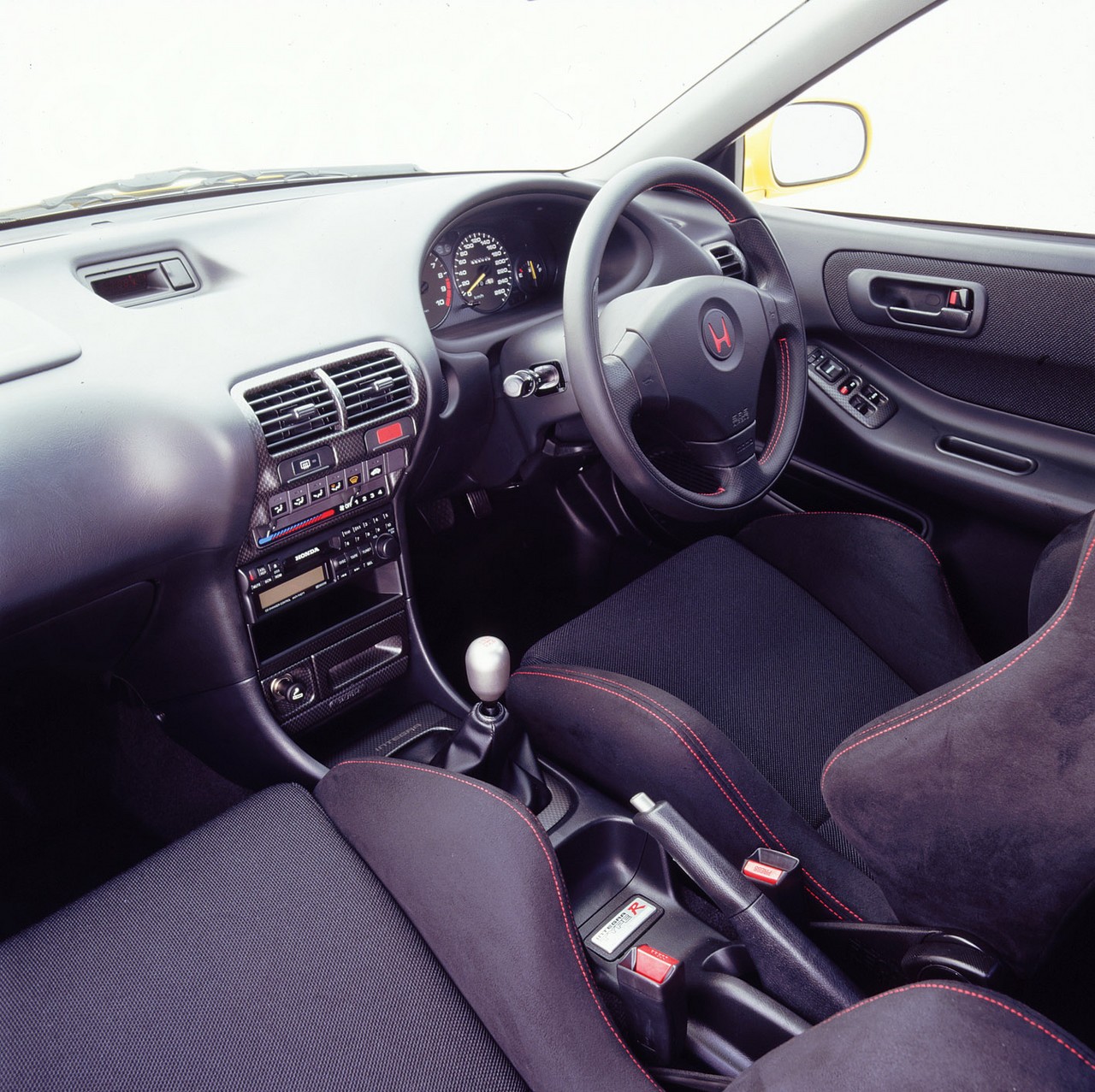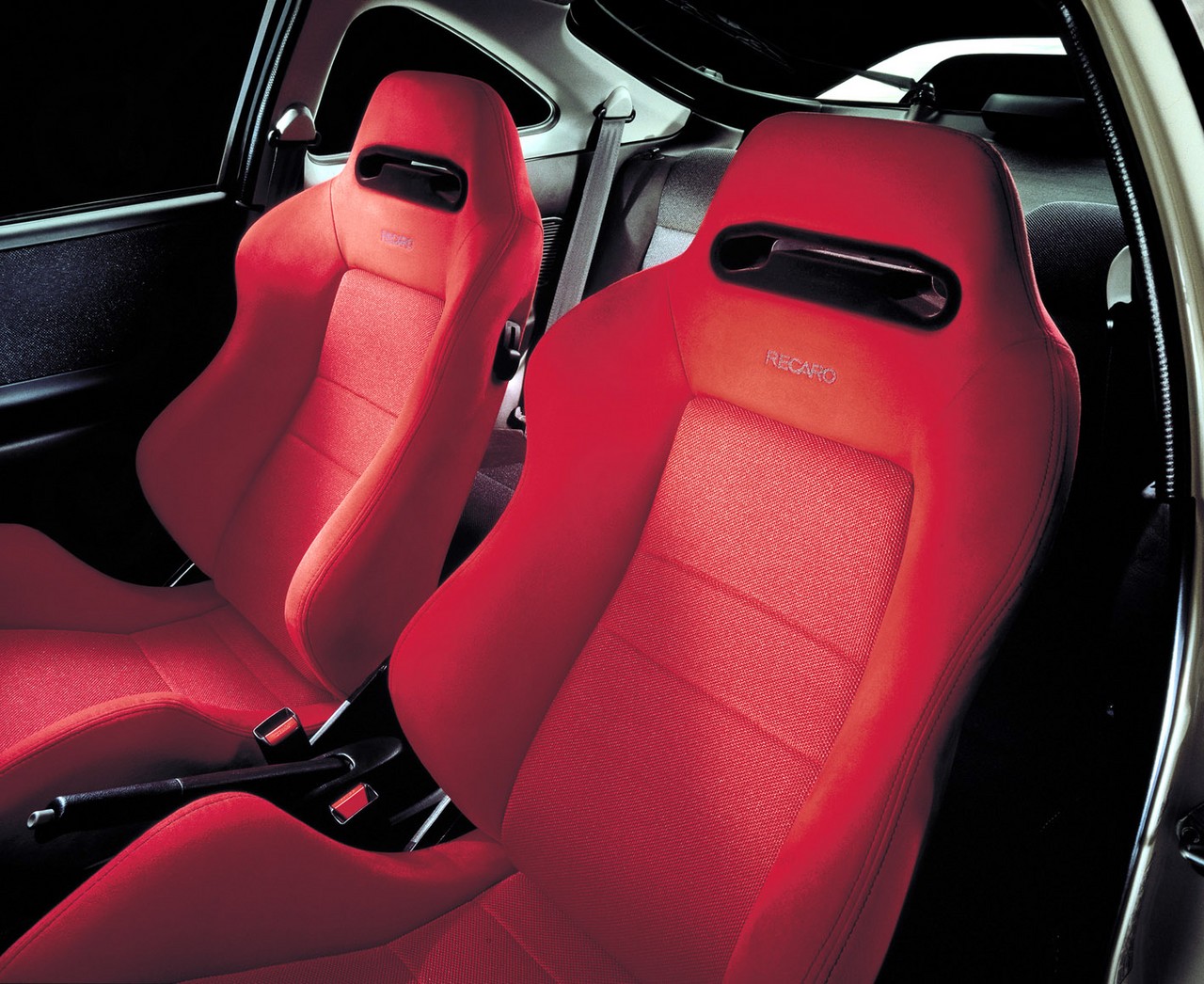
- Free-revving engines
- Agile, balanced chassis
- Excellent ride/handling balance
- Type R is a proper sports car
- Poor rear visibility
- Limited rear seat access and headroom
- Cabin lacks sound insulation
- Type R has firm suspension
Honda DC2.I and DC4.I Integra (1993-99)
Overview
Released in July 1993, the third-generation Honda Integra was a front-wheel drive, three-door liftback. Manufactured in Suzuka, Japan, the range consisted of the DC2 Integra VTi-R and the DC4 Integra GSi, though both were powered by 1.8-litre four-cylinder petrol engines.
B18B2 and B18C1 engines
The DC4 Integra GSi was variants were powered by Honda’s 1.8-litre B18B2 four-cylinder engine which had double overhead camshafts, four valves per cylinder and a compression ratio of 9.2:1.
The DC2 Integra VTi-R, however, was powered by the B18C1 engine which had a higher compression ratio (10.0:1), secondary intake butterfly valves which opened at 5800 rpm and Honda’s Variable Valve Timing and Lift Electronic Control (VTEC) system which could select from two camshaft profiles for low and high RPM operations. For the VTi-R, the high RPM VTEC camshaft profile engaged at 4400 rpm.
Dimensions and suspension
Compared to its second generation predecessors, the DC2/DC4 Integra was 10 mm shorter (at 4380 mm), the same width (1710 mm), 10 mm taller (1335 mm) and had a 20 mm longer wheelbase (2570 mm). The Mk.3 Integra was fitted with double wishbone front and rear suspension; the VTi-R variants had a firmer, sports suspension tune.
| Variant | Years | Engine | Trans. | Peak power | Peak torque |
|---|---|---|---|---|---|
| GSi | 1993-99 | 1.8-litre petrol I4 | 5sp man., 4sp auto |
107 kW at 6300 rpm | 172 Nm at 5200 rpm |
| VTi-R | 1993-99 | 1.8-litre petrol I4 | 5sp man. | 125 kW at 7300 rpm | 173 Nm at 6200 rpm |
Safety equipment
Initially, the Integra GSi was not fitted with any safety equipment though the VTi-R was fitted with a driver’s airbag and ABS. However, the GSi was fitted with a driver’s airbag from August 1994 and ABS from 1998. Furthermore, the VTi-R was fitted with a front passenger airbag from March 1996.
Features
Standard features for the Integra GSi and VTi-R included 15-inch alloy wheels, a four speaker sound system with a radio and cassette player, central locking, power windows and mirrors, a tilt adjustable steering wheel and a power sunroof.
From March 1996, air conditioning was fitted as standard.
1999 Integra GSi Indy Special
In October 1999, Indy Special editions of the GSi variant were released. Compared to the standard GSi, the Indy Special editions added unique alloy wheels and a rear spoiler.
Honda DC2.II and DC4.II Integra (1999-01)
Overview
Released in November 1999, the DC2 and DC4 Series II (DC2.II and DC4.II) Integra range consisted of the Type R and GSi variants, respectively.
Integra Type R and B18C7 engine
The DC2 Integra Type R was powered by Honda’s B18C7 engine which had high-compression, low-friction pistons (for a compression ratio of 11.1:1) and a high-flow exhaust system. Furthermore, the high RPM VTEC camshaft profile engaged at 5700 rpm. The close-ratio five-speed manual transmission was modified for the Type R with changes to the ratios, bearing design and clutch; kerb weight was also reduced by 27 kg to 1087 kg.
| Variant | Years | Engine | Trans. | Peak power | Peak torque |
|---|---|---|---|---|---|
| GSi | 1999-01 | 1.8-litre petrol I4 | 5sp man., 4sp auto |
107 kW at 6300 rpm | 172 Nm at 5200 rpm |
| Type R | 1999-01 | 1.8-litre petrol I4 | 5sp man. | 141 kW at 7900 rpm | 178 Nm at 6300 rpm |
Safety equipment
Compared to its DC4.I predecessor, standard safety equipment for the DC4.II Integra GSi was unchanged. Compared to the GSi, the Integra Type R was further equipped with a front passenger airbag.
Features
Sttandard features for the DC4.II Integra GSi were unchanged, though a rear spoiler was fitted as standard.
The Integra Type R was distinguished by its unique 15-inch alloy wheels with 195/55 R15 84V tyres, Recaro front seats, Momo steering wheel, titanium gearshift knob and carbon fibre-look panels. The Type R was also fitted with a limited slip front differential and 282 mm by 21 mm ventilated front brake discs and 260 mm by 9 mm solid rear discs. Visually, the Type R could be identified by its chin spoiler and high wing rear spoiler.
Related links
